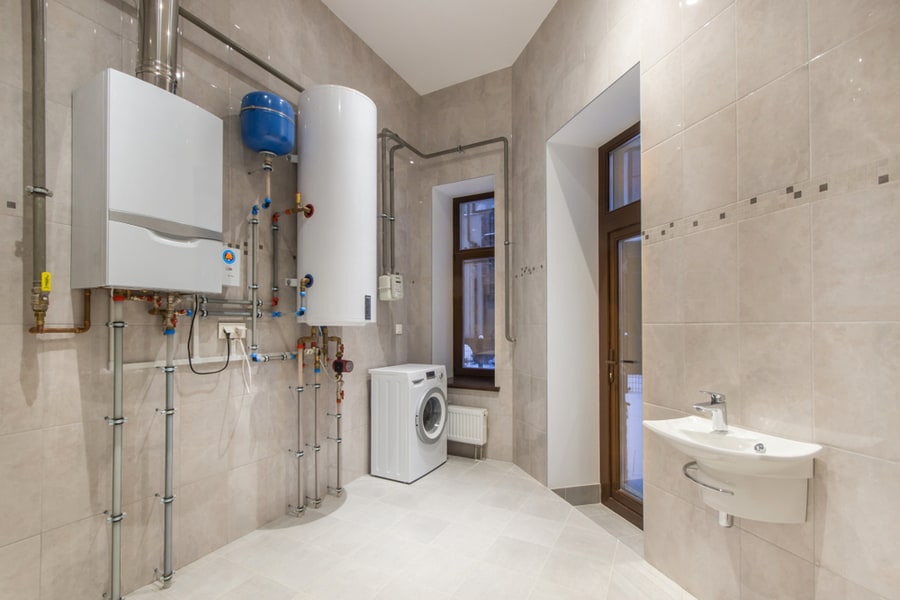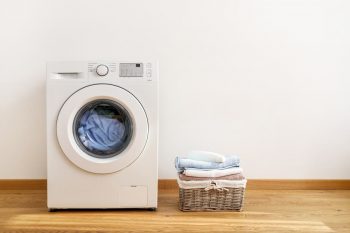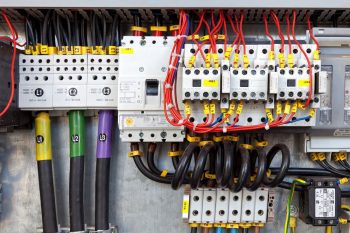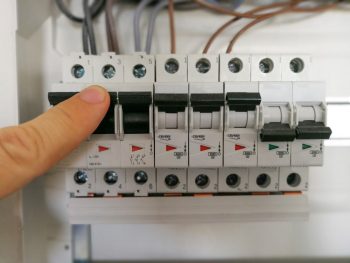
Water heaters are hazardous appliances. So the Uniform Plumbing Code puts certain measures in place to ensure homeowners are safe despite having such a hazard in their homes.
One of the regulations imposed on the installation of water heaters is that they should be at least 18 inches off the ground.
While that seems easy enough to comply with, the question stands, what should you put underneath your water heater to keep it up off of the ground?
Here’s a quick guide.
- The Uniform Plumbing Code dictates that water heaters must be 18 inches from the ground.
- Some homeowners use store-bought water heater stands made of metal to fulfill the requirement.
- Others have a stand made to match their water heater’s size and surroundings.
- A low-cost alternative would be using bricks to lift the heater off the ground, which may cause balance issues.
The Uniform Plumbing Code advises that homeowners install their water heater up and off the ground by at least 18 inches.
This protects the unit from possible rust and corrosion in the event of flooding and pooling of water directly underneath.
Moreover, gas tanks present a unique fire hazard. If you have a gas water heater, lifting it off the ground can prevent the possible fire from the pilot light from making contact with the floor’s surface.
What You Should Put Under a Water Heater

When a water heater is initially installed, your plumber should have at least recommended placing it on top of something.
Water heater stands are fairly inexpensive to buy or make and guarantee the safe use of your water heater even when you’re not there to keep an eye on it.
If your water heater is resting on the ground or you plan to install a new one, ask your trusted plumber for their professional input.
The best thing to place underneath your water heater is a stand. Designed to look like a small table, these stands are about the same size as the water heater tank’s footprint.
The short legs lift the heater off the ground to the desired height, preventing the unit from touching the floor’s surface. Water heater stands usually use a metal frame to retard potential fire.
Although some options use wood, it’s not usually recommended. Wood absorbs moisture causing rot over time. They’re also significantly more prone to fire, which may increase the likelihood of accidents relating to your water heater.
Some homeowners have gotten away with lifting their water heaters off of the ground with a set of bricks. This entails arranging the bricks in such a way that they support the weight of the heater.
They work just as well as made-to-order metal stands, but they often lack the features to prevent the water heater from tipping and falling over.
Conclusion
Water heaters are safest when they’re lifted off of the ground. This prevents damage to your unit and reduces the risks of hazards like fire.
If your water heater is still stuck on the ground, ask your plumber to assist you in finding an appropriate stand for the appliance so you can comply with the regulations of the Uniform Plumbing Code.
Frequently Asked Questions
Do All Water Heaters Need To Be Lifted Off of the Ground?
No, some water heaters work just fine, even when they’re directly set on the floor. Flammable vapor ignition-resistant heat can be installed directly on the floor without an increased chance of fire.
What Should I Place Underneath a Water Heater?
Sometimes, it is required that you place a drip pan underneath your water heater. This collects condensate that forms as the heater performs its function.
A drip pan may be required if your water heater is in an attic or ceiling space. However, there might be no need for a drip pan when in a basement or garage.
Drip pans also have to follow specific sizing and depth guidelines. Check with your local regulations to determine their drip pan specifications requirements.












